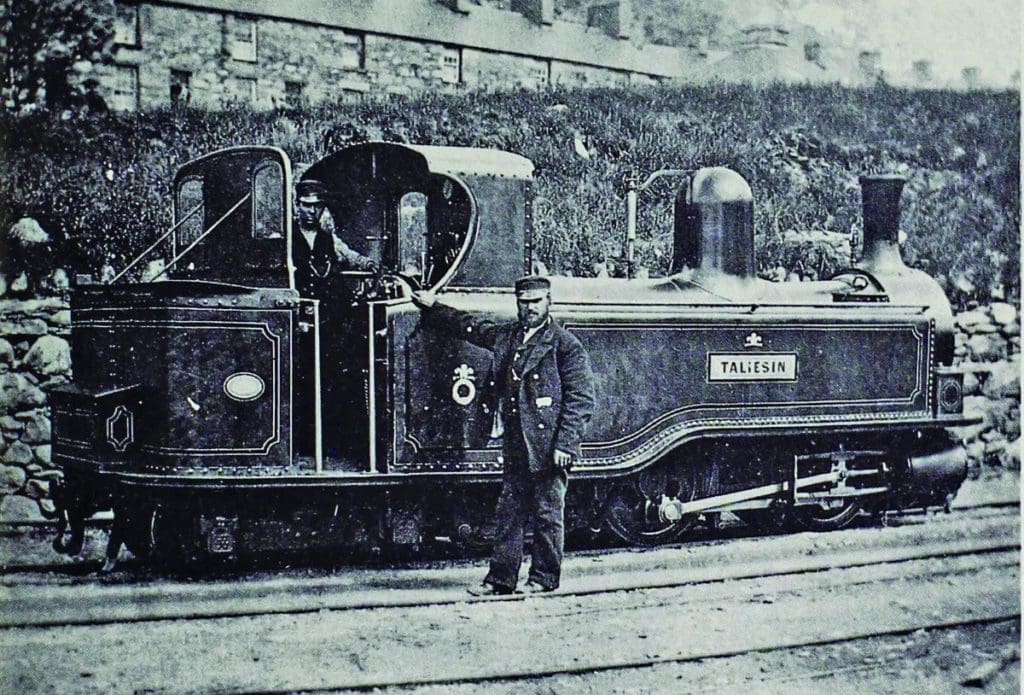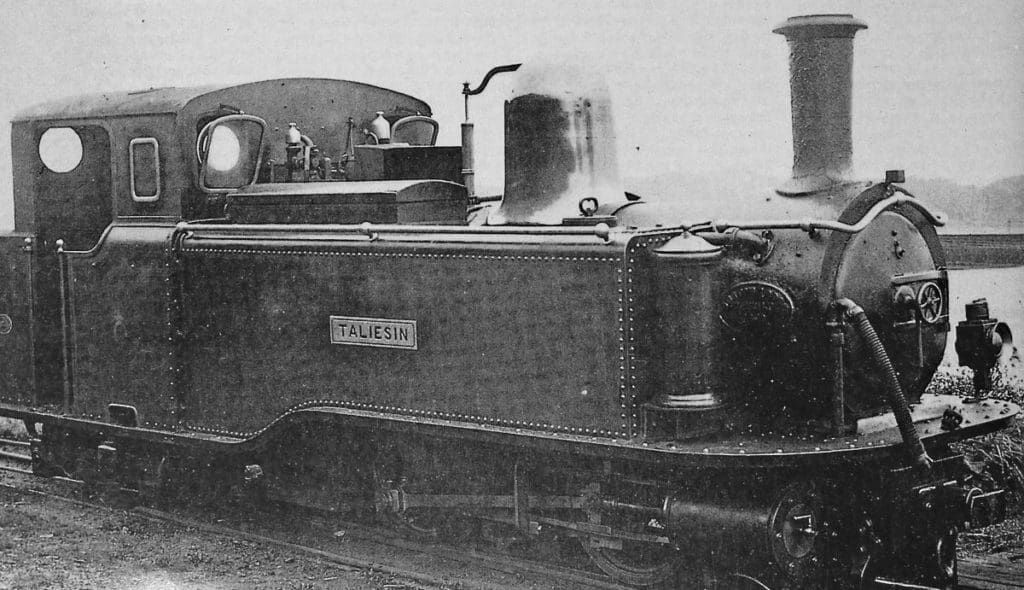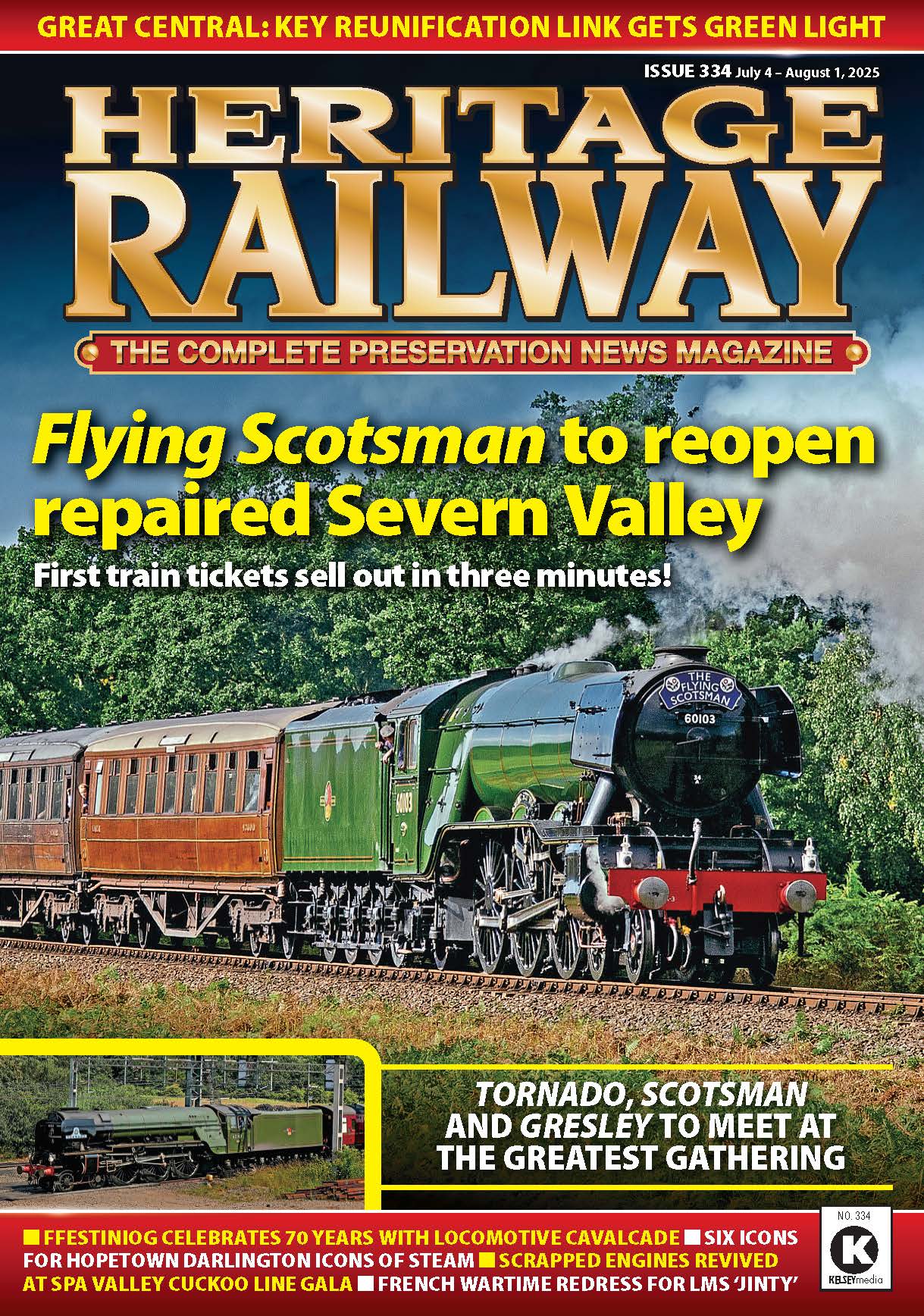The bold move to replace an important part of the Festiniog Railway’s history by building a single Fairlie locomotive is well on course, backed by an enthusiastic influx of funds. From The Railway Magazine, February 1990.

Scrapping a steam locomotive these days is a virtual impossibility. Even the most moribund of locos is now a candidate for restoration. Imagine then the agonising that must have grown over the years among the membership of the Festiniog Railway Society that it had sanctioned the disposal of the last example of a locomotive that was a rare example of a type of motive power on North Wales narrow- gauge lines.
Festiniog Railway 0-6-4 tank Moel Tryfan was the last remaining articulated single Fairlie in Britain. Yet it was the first (and only) steam locomotive to be scrapped by the Society in 1954, soon after its formation, as part of the fund-raising to get the line back in action.
Enjoy more Heritage Railway reading in the four-weekly magazine.
Click here to subscribe & save.
Though only the boiler and chassis of the locomotive remained, its disposal is a blot on the history of the Society that must have been brought into sharper focus by the railway’s more recent emphasis on heritage. In this, locomotives and rolling stock have been specially restored in Victorian style and liveries, rather than modernising them to satisfy operational requirements as a priority.
The most obvious manifestation of the heritage programme was 1988’s restoration, sponsored by the Wales Tourist Board and businessman Michael Schumann, of the double-ended Fairlie Merddin Emrys to its form as built in 1879.
Even that didn’t satisfy some, who criticised the faked rivets on the welded water tanks. But any residual guilt is now certain to be erased with the launching of a project to build a completely new single-ended Fairlie by the year 2000.

Launched last April by Andy Savage, a director of the Festiniog Railway Company and vice-chairman of the Society, the plan is to reproduce a traditionally-profiled but modernised version of Taliesin, a single-ended 0-4-4 tank Fairlie built in 1876 by Vulcan Foundry for the Festiniog. The locomotive was fondly remembered for its free steaming, smooth running and kindness to the track. But hard times in the lean years of the twenties saw its boiler condemned, the locomotive laid up, reinstated for light use and finally dismantled in 1932.
Andy, 37, who is British Rail’s Area Permanent Way Engineer for South Wales, had been toying with the idea of building a new Taliesin for some time but was rightly concerned that the estimated cost, £250,000, would be an impossible target to reach by means of straightforward donations.
He therefore devised a method by which members of the society could buy units paid for over several years. However, to ensure that the required 200 units would be obtained before any money changed hands he offered deeds of covenant through the Society’s magazine in which members could promise to pay the necessary £60 a year.
Andy set himself a date of April 1990 as the make or break point. Yet he found response to the project, called ‘Taliesin 2000’, far beyond his expectations. It had fired the imagination of the membership. Soon after the Society’s AGM at Porthmadog at the end of April and just a month after the original announcement, 134 members had signed-up. And last July, Dr John Prideaux, a former archivist of the Festiniog and director of Intercity, signed the 200th deed. Soon after, work started on the driving bogie frames.
The design of ‘Taliesin 2000’ is firmly based on modern experience with the Festiniog’s locomotives and will allow for interchangeability of the power bogies with the two double-ended Fairlies, but using an up-to-date superheated oil-fired boiler of similar internal design as the Festiniog’s American built Alco 2-6-2T, Mountaineer.
An attractive feature of the single Fairlie is that firebox dimensions, crew accommodation and fuel storage are less constrained than on a double-ended loco. Hence Taliesin will be an 0-4-4T Fairlie, its power bogie incorporating many later improvements, including more substantial axleboxes, automatic lubrication and reinforced flexible steam piping between the driving bogie and boiler, rather than the original design’s unreliable ball and socket joints. Links with the past will be maintained, too, for the wheels from the original Taliesin survive and will be used once more.
Overall cost of the ‘Taliesin 2000’ project, which is expected to take three full years of work, is estimated by Andy Savage on the basis that the reconstruction of double-ended Fairlie Earl of Merioneth (which ended up as an almost completely new locomotive) cost around £300,000 in 1979, even using already existing power bogies
The boiler for ‘Taliesin 2000‘, the construction of which will be contracted out, will probably cost £50,000. When finished, it will be the property of the Festiniog Railway Company. Any funds remaining after the completion of ‘Taliesin 2000’ will be directed into other projects.
Steve McCallum, the Festiniog’s workshop superintendent, feels that, operationally, the Festiniog already has sufficient motive power (though he would like more reliable diesels) and that the only commercial justification for new steam locomotives would be if they reduced costs, were required as a response to increased traffic, or in themselves generated more traffic. Obviously, the Festiniog employs clear-minded operators. He does, however, see a single Fairlie as being an attractive addition to the fleet, offering crews a comfortable working environment with maintenance and running costs lower than the current locomotives. He makes the point that it would restore a feature of the Festiniog’s heyday and make up for the loss of Moel Tryfan. This was a lighter but longer 0-0-4 single Fairlie of similar outward appearance to Taliesin. It was built a year earlier in 1875 by the Vulcan Foundry for the North Wales Narrow Gauge Railway to the design of George Percival Spooner (though some published drawings credited his father. (Charles Easton Spooner).
It was one of a pair that were the first to use the 0-6-4T configeration in the UK, the other being Snowdon Ranger, ordered for use on the line which later became part of the Welsh Highland Railway. During the first world war, Moel Tryfan was fitted with Snowdon Ranger’s power bogie to complete one serviceable locomotive, and was inherited by the Festiniog at the formation of the Welsh Highland in 1923. Moel Tryfan was dismantled in 1936, the boiler and power bogie being stored at the Festiniog’s Boston Lodge works until scrapped in 1954. The trailing bogie wheels survived and were used as the leading pony trucks added to the Festiniog‘s two former Penrhyn Railway Hunslets, Linda and Blanche.
Continuity appears to be a theme which the Festiniog could profitably exploit in the sponsorship of the ‘Taliesin 2000’ project. The Vulcan Foundry, which built the three single Fairlies to Spooner’s drawings more than 110 years ago, is now part of Sir Arnold Weinstock‘s GEC. Corporate entertainment with unusual themes is well in demand now. Imagine complete trains using contemporary but traditionally styled stock backed by large corporates. Over to you Sir Arnold?
‘Moel Tryfan’ and ‘Snowdon Ranger’ Built 1875 by Vulcan Foundry, works nos. 738 and 739, for North Wales Narrow Gauge Railway to design by G. P. Spooner. 0-6-4T single Fairlie type. Weight in working order, 14 tons. Tractive effort, 3,538 lb. at 75 per cent boiler pressure of 140 lb. per sq. in. Heating surface, 366 sq. ft. Grate area, 5.9 sq. ft. Wheelbase, 14ft. 11.5in. (driving bogie, 6ft.). Cylinders, 8-5 x 14in. Driving wheel diameter, 2ft. 6in.
Snowdon Ranger, new boiler 1902 from Davies & Metcalfe, Manchester.
Moel Tryfan, new boiler 1903 from Davies & Metclafe, Manchester.
Snowdon Ranger, withdrawn 1917 and frames placed under Moel Tryfan.
Moel Tryfan, 1923, cab and boiler mountings lowered for working between Dinas Junction and Blaenau Ffestiniog on Festiniog and Welsh Highland systems. 1937, to Boston Lodge and dismantled for boiler repairs. In store until 1954 when scrapped. Trailing bogie survived, wheels used in leading pony trucks on former Penrhyn Hunslets Linda and Blanche.
‘Taliesin’
Built 1876 by Vulcan Foundry, works no. 791, for Festiniog Railway to design by G. P. Spooner. 0-4-4T single Fairlie type. Weight in working order 17 tons. Tractive effort, 3,029lb. Boiler pressure, 150 lb. per sq. in. Heating surface, 342.5 sq. ft. Grate area, 6.25 sq. ft.
Wheelbase, 13ft. 1in.(4ft.6in. driving bogie). Cylinders, 9 x 14in. Driving wheels diameter, 2ft. 8in.
1900; new boiler from Vulcan foundry fitted. Cab and tanks enlarged.
1924; boiler condemned and engine dismantled. Engine re-erected. 1925; returned to traffic, boiler not passed inspection. Used for light work to 1927.
1932; dismantled, wheels still extant. Boiler sold for scrap 1935.
Advert
 Enjoy more Heritage Railway reading in the four-weekly magazine. Click here to subscribe.
Enjoy more Heritage Railway reading in the four-weekly magazine. Click here to subscribe.




